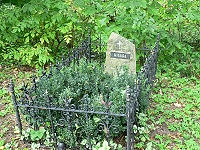How to Pronounce Stanisław Wigura
#50
Most Popular
Boost
Apr 09, 1903 Warsaw, Masovian Voivodeship, Poland Died on 11 Sep 1932 (aged 29)
Polish aircraft designer and aviator
AriesStanisaw Wigura, Date of Birth, Place of Birth, Family, Facts, Age, Net Worth, Biography and More in FamedBorn.com

Polish aircraft designer and aviator
Aries